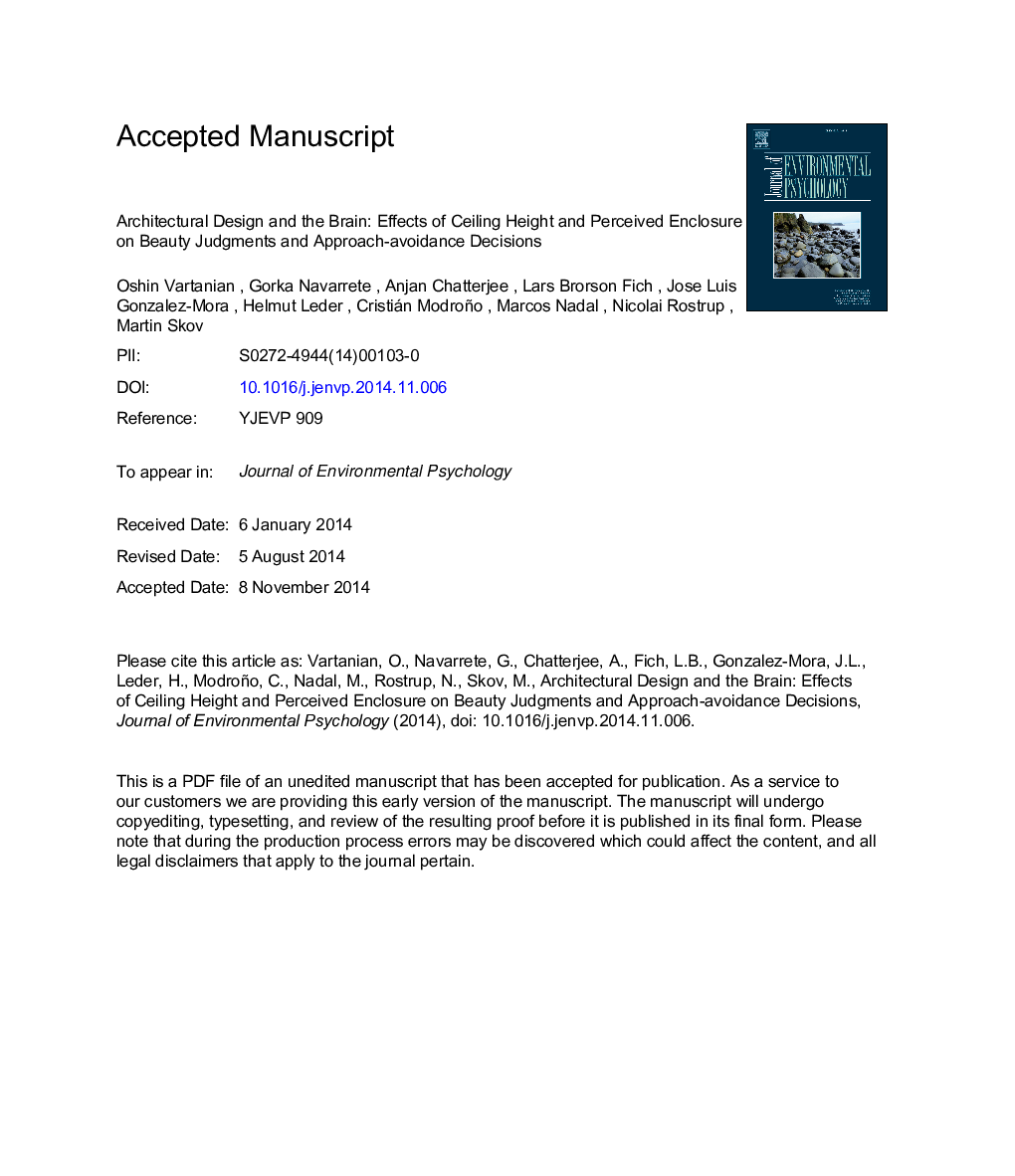| Article ID | Journal | Published Year | Pages | File Type |
|---|---|---|---|---|
| 7245913 | Journal of Environmental Psychology | 2015 | 43 Pages |
Abstract
We examined the effects of ceiling height and perceived enclosure-defined as perceived visual and locomotive permeability-on aesthetic judgments and approach-avoidance decisions in architectural design. Furthermore, to gain traction on the mechanisms driving the observed effects, we employed functional magnetic resonance imaging (fMRI) to explore their neural correlates. Rooms with higher ceilings were more likely to be judged as beautiful, and activated structures involved in visuospatial exploration and attention in the dorsal stream. Open rooms were more likely to be judged as beautiful, and activated structures underlying perceived visual motion. Additionally, enclosed rooms were more likely to elicit exit decisions and activated the anterior midcingulate cortex (aMCC)-the region within the cingulate gyrus with direct projections from the amygdala. This suggests that a reduction in perceived visual and locomotive permeability characteristic of enclosed spaces might elicit an emotional reaction that accompanies exit decisions.
Related Topics
Social Sciences and Humanities
Psychology
Applied Psychology
Authors
Oshin Vartanian, Gorka Navarrete, Anjan Chatterjee, Lars Brorson Fich, Jose Luis Gonzalez-Mora, Helmut Leder, Cristián Modroño, Marcos Nadal, Nicolai Rostrup, Martin Skov,
